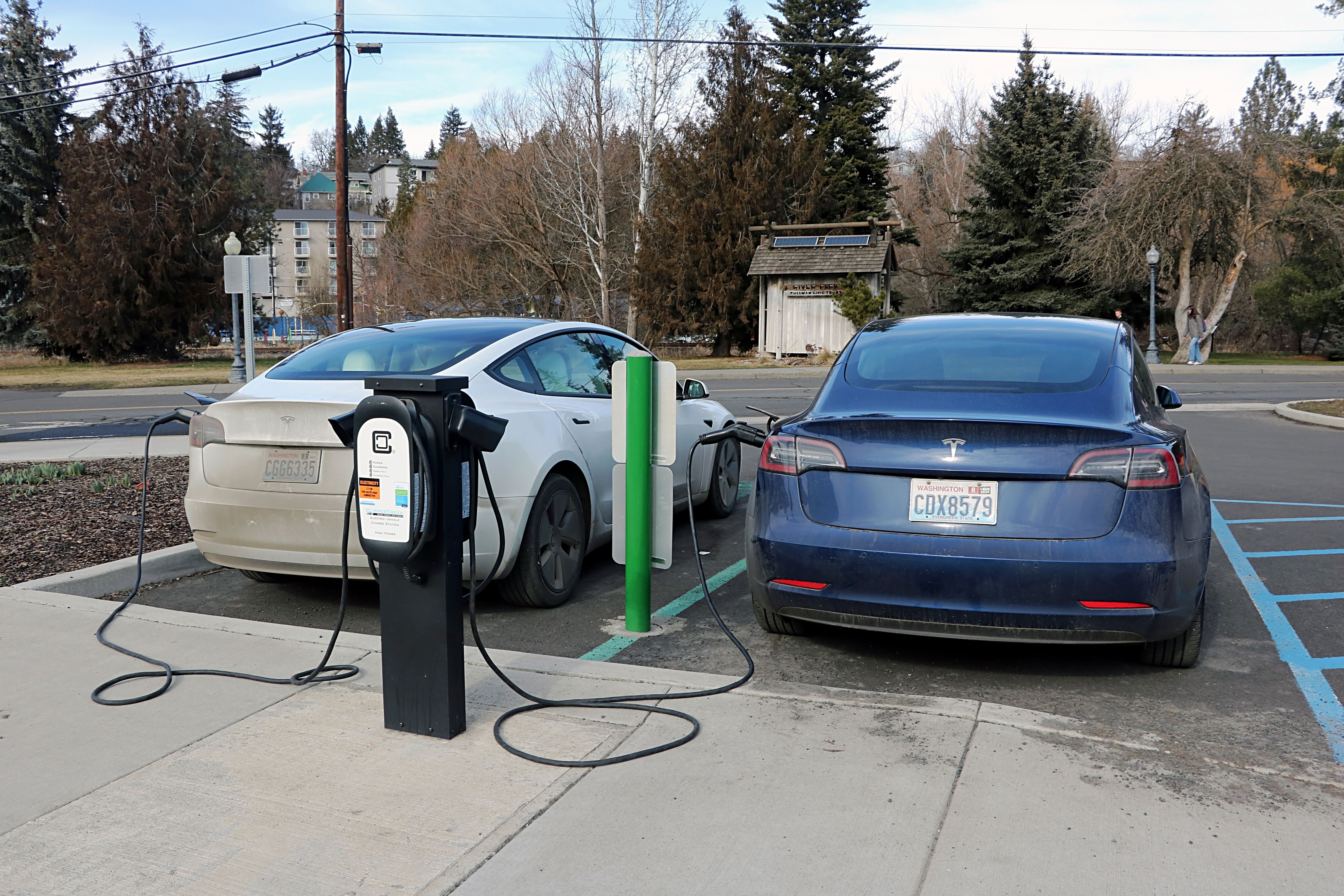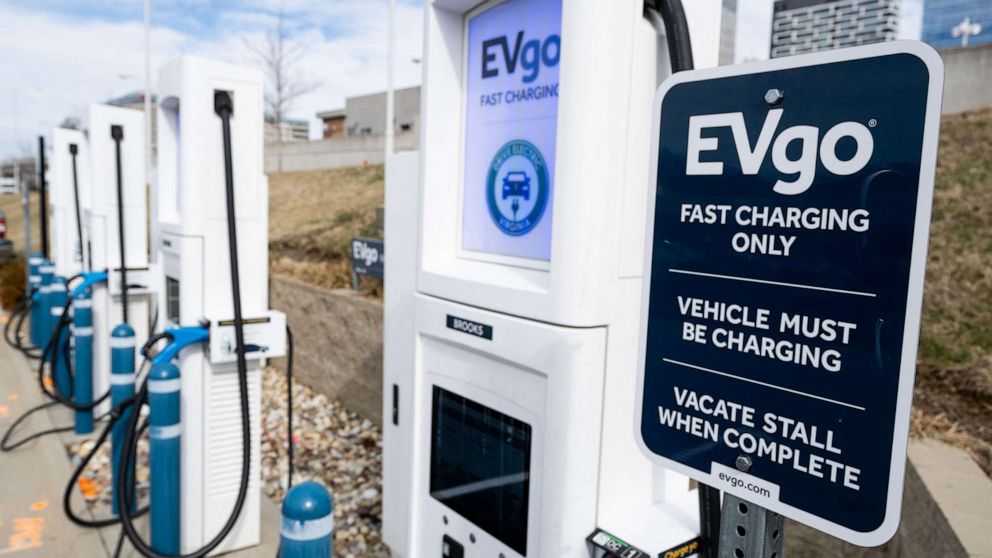What’s Driving the Growth of EV Infrastructure? Buy EV Charging news for Key Updates
What’s Driving the Growth of EV Infrastructure? Buy EV Charging news for Key Updates
Blog Article
Leading EV Charging Information: Secret Updates on Infrastructure and Innovation

Current Improvements in Fast-Charging Modern Technology

Additionally, advancements in battery modern technology, including enhanced thermal monitoring systems and higher energy thickness batteries, enhance fast-charging abilities. These growths mitigate the risk of battery deterioration throughout fast charging, making sure long life and efficiency for EV owners.
Additionally, the integration of clever charging solutions is enhancing user experience, enabling real-time monitoring and dynamic rates designs. EV Charging news. This adaptability permits motorists to enhance charging prices and times based upon grid demand
As automakers remain to purchase fast-charging networks, the partnership in between market stakeholders is vital. Partnerships between billing station carriers and auto manufacturers are leading the way for extensive protection, eventually promoting a much more durable EV ecological community. These improvements are pivotal in supporting the transition to sustainable transportation.
Government Efforts for Charging Expansion
Federal government initiatives play a critical function in the expansion of electric vehicle (EV) charging infrastructure, facilitating the transition to sustainable transportation. Various government and state programs are being implemented to improve charging ease of access, decrease the monetary burden on customers, and advertise the fostering of electric vehicles.
Notably, the united state federal government has alloted considerable financing through the Framework Financial Investment and Jobs Act, which sets aside $7.5 billion for EV billing network growth across the nation. This financing is focused on releasing hundreds of brand-new charging terminals, particularly in underserved locations, therefore attending to array stress and anxiety amongst prospective EV customers.
In addition, numerous states are establishing legislation to simplify the allowing process for billing terminal installations, which is vital for accelerating release. Incentives such as tax debts and rebates for both customers and businesses are likewise being presented to encourage the setup of billing framework.
Moreover, public-private collaborations are increasingly ending up being an emphasis, leveraging private financial investment to enhance federal government financing. These initiatives highlight a collaborative approach essential for building a reliable and thorough EV charging network, ultimately adding to a greener and more sustainable future.
Innovative Battery Solutions Enhancing Performance
Reinventing the landscape of electric lorry (EV) innovation, innovative battery remedies are significantly improving efficiency and efficiency. Advancements in battery chemistry, especially with lithium-sulfur and solid-state batteries, are leading to increased energy density, which enables longer varieties and faster billing times. These new battery kinds have the prospective to outmatch traditional lithium-ion batteries by providing higher capacities while reducing weight, thus improving total car performance.
In addition, growths in battery monitoring systems (BMS) are enhancing energy use and prolonging battery life expectancy. Intelligent algorithms monitor battery health and wellness and performance, making it possible for real-time modifications to billing and discharging procedures. This not only improves the effectiveness of the battery however likewise ensures a more trustworthy and sustainable power resource for EVs.
Furthermore, the assimilation of recycling technologies is addressing the ecological impact of battery manufacturing and disposal. Developments in second-life applications for EV batteries are facilitating their usage in power storage systems, adding to a circular economy.
As these ingenious battery options remain to progress, they guarantee to change the EV market, making electrical lorries more obtainable and attractive to a broader target market while supporting global sustainability goals.

Partnership In Between Automakers and Charging Networks
Recognizing the essential requirement for a robust charging infrastructure, automakers are progressively teaming up with charging network carriers to improve the EV possession experience (EV Charging news). These collaborations intend to produce a smooth charging ecological community that benefits customers and supports the transition to electrical cars
Significant automotive brands are signing up with forces with well-known billing networks to expand their charging terminal insurance coverage, making certain motorists have access to dependable and hassle-free billing alternatives. As an example, partnerships with networks like ChargePoint and Electrify America enable car manufacturers to incorporate billing services straight into their automobiles' navigation systems, guiding customers to the nearby terminals and giving real-time schedule updates.
Moreover, these cooperations usually lead to the advancement of fast-charging innovations that dramatically minimize the moment needed to charge an EV. By merging sources and proficiency, car manufacturers and billing networks can innovate much faster, creating remedies that satisfy the expanding demand for electric flexibility.
On top of that, joint initiatives may additionally result in even more standardized billing methods, which can reduce customer complication and advertise wider EV adoption. On the whole, these strategic alliances are pivotal in constructing a efficient and easy to use charging framework that fulfills the demands of an increasing electrical car market.
Challenges Encountering EV Charging Framework
As the electric car market proceeds to grow, a number of obstacles are emerging that impede the advancement of an extensive billing infrastructure. One of the key obstacles is the inadequate number of billing terminals, particularly in country and underserved city areas. This space creates variety stress that site and anxiety among prospective EV purchasers, discouraging them from making the switch.
Furthermore, the absence of standardization in billing modern technology makes complex the infrastructure landscape. Variants in plug types and charging rates can create complication for individuals and enhance operational complexities for charging network operators. The integration of billing stations right into existing electric grids poses considerable difficulties. Lots of regions encounter capability restrictions, calling for substantial financial investments in grid upgrades to suit boosted demand.
One more pressing problem is the high price related to the installation and maintenance of billing terminals, which can be an obstacle for both private businesses and public entities. Lastly, regulatory difficulties and zoning limitations can delay the deployment of charging facilities, impeding progression in increasing vital services. Addressing these obstacles will be important for promoting a robust EV ecosystem that supports the shift to sustainable transport.
Conclusion
To conclude, the ongoing improvements in EV charging technology, sustained by substantial government efforts and ingenious battery solutions, are vital for the development and performance of electric lorry facilities. Cooperations in between automakers and charging companies further improve look what i found station coverage, addressing the expanding demand for obtainable charging choices. Regardless of difficulties that linger within the EV charging landscape, these advancements symbolize a favorable trajectory in the direction of a more lasting and reliable electric vehicle environment.
Technologies in billing infrastructure have led to the advancement of ultra-fast chargers qualified of supplying up to 350 kW of power, significantly reducing charging times. Variations in plug kinds and charging rates can develop complication for customers and boost functional complexities for charging network drivers.In verdict, the ongoing improvements in EV billing modern technology, supported by significant government initiatives and ingenious battery solutions, are critical for the growth and efficiency of electrical car facilities. Collaborations between car manufacturers and billing suppliers better boost terminal coverage, addressing the expanding need for accessible billing choices. Despite challenges click to read more that continue within the EV billing landscape, these growths represent a positive trajectory towards a more lasting and effective electrical automobile environment.
Report this page